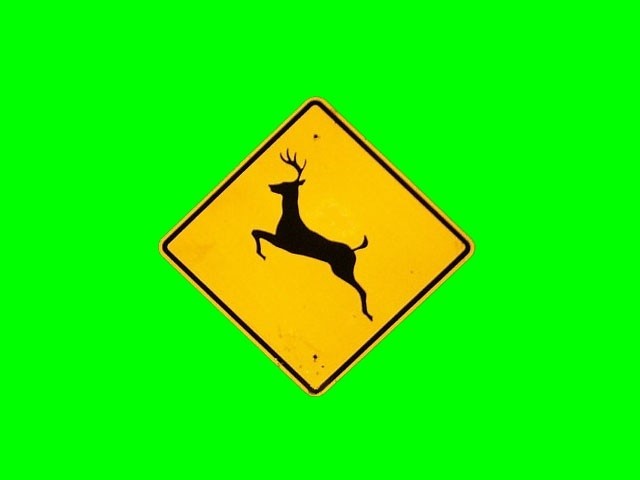"Deer are on the move during this time of year," said Commissioner Mark Williams, Department of Natural Resources. "While motorists in rural areas may expect to see deer, Georgia's suburban and urban areas can be prime spots as well."
More than 300 people were injured when vehicles collided with deer in 2011, according to data provided by the Georgia Governor's Office of Highway Safety.
A total of 1,000 people across the country died in similar accidents between 2006 and 2010, according to statistics from the National Highway Traffic Safety Administration.
"While deer are beautiful to watch in their natural environment, they
can be unpredictable hazards for motorists on Georgia's roads,
especially now during their fall breeding season," said Harris
Blackwood, director of the Governor's Office of Highway Safety.
"These hazards just underline the need for motorists to observe
posted speed limits and wear their seatbelts."
Even when passengers of a vehicle escape a collision with a deer
unharmed, there are consequences.
"Automobile claims caused by contact with a deer generally rise
dramatically in the fall," said Georgia Insurance Commissioner Ralph
Hudgens. "I encourage all Georgia drivers to check their automobile
policy to determine if they have adequate coverage. This optional
protection is commonly found in the comprehensive coverage of an
automobile policy. "
"Hunting is oftentimes mistakenly blamed for increased deer-car
collisions, but there are natural and human causes for their
activity." says Don McGowan, senior biologist with the DNR's
Wildlife Resources Division. "Changes in seasons and other factors
lead to increased wildlife sightings."
He points out three key factors:
● Mating Season- Deer mating season occurs between October and early
December. Male deer go into rut and begin actively searching for mates.
This greatly contributes to the increased movement of deer, bringing
them across roadways.
● Increased human population and rural development- As the human
population continues to grow and expand into traditionally rural areas,
deer lose their natural food source and consequently move into new areas
in search of food and water.
● Time Changes- As we begin to "fall back" for daylight savings
time, our days become shorter and nights become longer. Rush hour for
most commuters tends to fall during the same hours in which white-tailed
deer are most active -- dawn and dusk.
The state agencies offer motorists some tips and information to help
avoid potential collisions:
● Unpredictable: Always remember deer are wild, and therefore, can be
unpredictable. A deer calmly standing on the side of a road may bolt
into or across the road rather than away from it when startled by a
vehicle.
● One Deer Usually Means More: Take caution and slow down when a deer
crosses. Deer generally travel in groups, so if one crosses, be prepared
that others may follow.
● Time of Day: As deer are most active at dawn and dusk, they typically
are seen roadside during the early morning and late evening -- the same
times most people are commuting to and from work.
● Time of Year: While deer-car collisions can occur any time of year,
the fall breeding season is a peak time for such accidents. Road
shoulders generally provide green food both during extremely dry times
of the year and following a long, hard winter.
● Minimize Damage: If it is too late to avoid a collision, drivers are
advised to slow down as much as possible to minimize damage - resist the
urge to swerve to avoid the deer, this may cause further damage, sending
drivers off the road or causing a collision with another vehicle. If an
accident occurs, alert the police as soon as possible.

http://accesswdun.com/article/2012/10/254166
